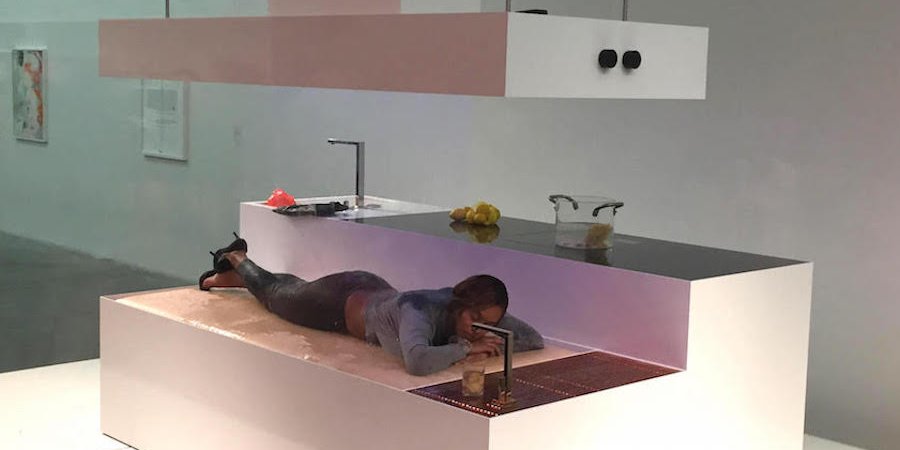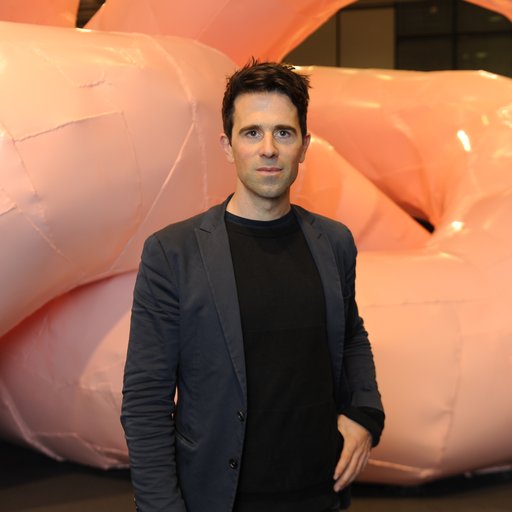The New Museum Triennial is maturing nicely, while somehow seeming to age in reverse. Its third incarnation, “Surround Audience,” improves considerably on the previous two and feels unimpeachably current in its themes of technology-driven paranoia and surveillance. (I imagine it will cause many sleepless nights for, among others, the curators of the next Whitney Biennial, which has been in the New Museum’s crosshairs since the first Triennial in 2009.)
The Triennial’s organizers, the Internet-video savant Ryan Trecartin and the former Rhizome.org executive director Lauren Cornell, have an ease with tech-based art that’s rare among museum curators (even those who identify as digital natives). And they understand that the show is as much an experience as it is a statement. Their installation is unusually responsive to art, artists, and the needs of the museum-going public, who don’t want to spend hours squinting at wall labels or figuring out where one work ends and another begins.
Intellectually, too, their Triennial is “more searching than researching, less archival than alive,” in the words of Brian Droitcour’s introduction to The Animated Reader, the lively poetry anthology that accompanies the show. That’s rarely true of big surveys, and it sure sounds like a dig at the 2014 Biennial (defined by its archive-mania and devotion to dead artists.)
At the same time, there’s a lot more of the past in the digital present of “Surround Audience” than you might expect. It’s most evident in the exhibition’s abstract sculptures, which look more Postminimalist than Post-Internet (as in Olga Balema’s PVC bags filled with water and small pieces of detritus, or the intersecting metal frames of José Léon Cerrillo.)
And it’s least evident in, of all things, figurative art, which would seem to be the most retrograde of the show’s many platforms but turns out to be ripe for reinvention. Frank Benson’s sculpture of the transgender artist Juliana Huxtable celebrates a body that has undergone both surgical and digital alterations; Oliver Laric whips through dozens of cartoon characters in a short video animation that suggests the anxiety of choosing an avatar.
Even more refreshing than the show’s attitude toward the body is its attention to language. Supplementing Droitcour’s Animated Reader, which samples liberally from social-media platforms, are clamorous poems by Trecartin (posted at the entrance to each floor of the exhibition). Meanwhile, Josh Kline’s Freedom, which may be the show’s signature piece, uses both political and social speech to harrowing effect; a digitally modified Obama delivers an alternate version of his inaugural address to an audience of Teletubbies in police gear (who also seem to be tuning in to our every tweet, to judge from the videos embedded in their stomachs.)
“Embedded” is a word that comes up often at the Triennial and its catalog; Cornell, for instance, writes about “embedding art in the world.” The phrasing isn’t perfect—isn’t good art, even regular old painting, always embedded in the world?—but you can see what she means, in the show’s many instances of artists teaming up with corporations or corporate-like entitites.
The collective DIS, for instance, puts a new gloss on the “Capitalist Realism” of the 1960s with The Island (KEN), a sleek horizontal shower made in collaboration with the bathroom/kitchen manufacturer Dornbracht. Antoine Catala, working with the ad agency Droga5, comes up with a new symbol for empathy that exists as both a GIF and a seductive aquatic sculpture. And the group K-Hole, an actual branding agency, is behind the Triennial’s goofy promotional campaign (sample slogan: “I’ll Triennial Once.”)
Whatever else you make of it, this idea of artists as savvy marketers makes sense in an art world with an increasingly robust P.R. industry. It may also be a sign of frustration with art’s lack of traction in the wider culture, or with the art market’s preference for hermetic conversations (all that zombie formalism) and authentic “outsiders.” Maybe, “Surround Audience” implies, there’s nowhere for art to go but in.
























